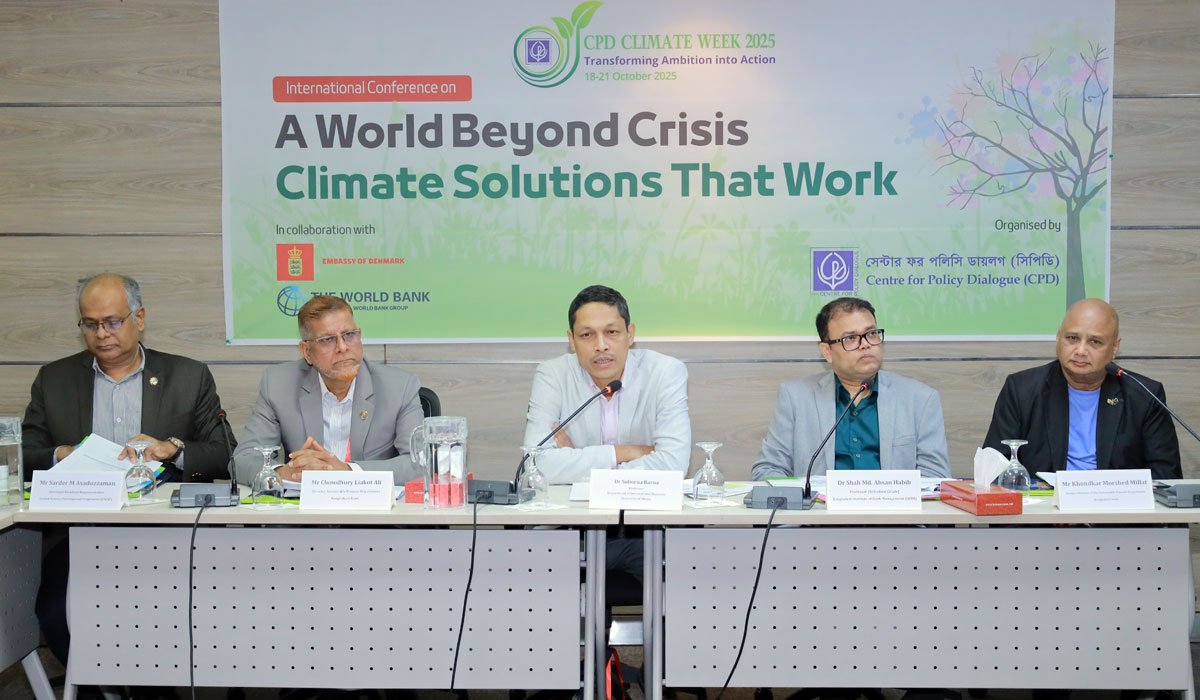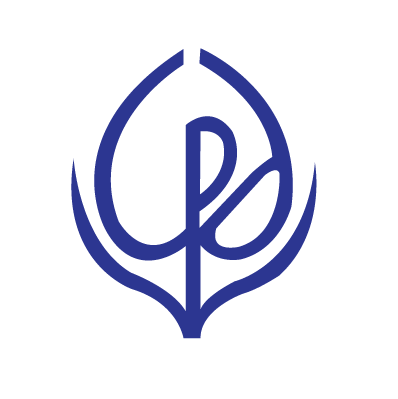
Bangladesh’s climate ambitions face a stark financial reality — the country needs nearly USD 29 billion every year to meet its combined adaptation and mitigation goals but can currently mobilise less than USD 3 billion, leaving a USD 26.5 billion gap—about 6 per cent of GDP. This shortfall underscores the urgent need for stronger governance, innovative financing models, and private sector participation to sustain climate action.
These challenges and opportunities shaped discussions at the Parallel Session 5, “Climate Finance, Landscape, Policy and Governance”, held on Saturday, 18 October 2025, as part of CPD Climate Week 2025. Experts from government, academia, financial institutions, and civil society called for aligning national strategies with global mechanisms, improving transparency, and developing inclusive financing systems that channel resources to where they are needed most.
Dr Suborna Barua, Professor at the University of Dhaka, Chaired the session and revealed that Bangladesh needs about USD 29.3 billion annually to meet its combined adaptation and mitigation goals, yet can currently mobilise just USD 2.76 billion — leaving a shortfall of roughly USD 26.5 billion, or 6 per cent of GDP. He stressed that bridging this gap requires coordinated government policy and robust private investment.

Expanding on this, Mr Chowdhury Liakot Ali, Director of the Sustainable Finance Department at Bangladesh Bank, detailed the central bank’s evolving green finance framework. Updated policies now include a Climate Finance Taxonomy and stricter Environmental and Social Due Diligence (ESDD) guidelines to reduce greenwashing. He noted that 34 per cent of sustainable finance targets have already been met and outlined incentives, including lending quotas and upcoming carbon trading mechanisms, to draw in private investment.
Mr Khondkar Morshed Millat, Former Director at Bangladesh Bank, reflected on progress since 2008, citing advances in sustainable finance and environmental risk management. He, however, warned that policy-practice gaps persist, particularly in SME financing, where entrepreneurs lack awareness of support schemes and banks fail to fully implement circulars designed to ease collateral requirements.
Sharing a global outlook, Dr Janak Raj, Senior Fellow at the Centre for Social and Economic Progress, presented findings from a G20-focused study estimating USD 2.2 trillion in climate finance needs across nine major emerging economies. He noted that multilateral development banks and the IMF currently provide less than 10per cent of this requirement, underscoring the urgent need for new international mechanisms and domestic readiness.
From a financial system perspective, Dr Shah Md Ahsan Habib, Professor at the Bangladesh Institute of Bank Management, questioned whether finance gaps reflect true need or aspirational targets. He argued for outcome-based project design, stronger alignment between banks and policy institutions, and the integration of Environmental, Social, and Governance (ESG) principles into national strategies.
Highlighting governance and access issues, Mr Sarder M Asaduzzaman, Assistant Resident Representative at UNDP, warned that grant flows are declining and will fall further after Bangladesh’s LDC graduation. He urged faster project implementation, better geo-tagging of funds, and vulnerability-based allocation to ensure that climate finance reaches the most affected regions and groups.
Offering a regional comparison, Dr Erandhati Pathiraja of the Institute of Policy Studies, Sri Lanka, shared lessons from Sri Lanka, where mitigation finance—driven by export demand—outpaces adaptation. She called for debt-for-nature swaps, carbon markets, and digital transparency tools to reduce fund misuse and strengthen South Asia’s collective climate finance credibility.
From the governance and transparency perspective, Mr Mahfuzul Haque, Senior Research Fellow at Transparency International Bangladesh (TIB), criticised the misuse of up to 50per cent of climate funds and the dominance of loan-based over grant-based finance. He urged Bangladesh to prepare strong modalities to access the forthcoming New Collective Quantified Goal (NCQG) funds and to strengthen monitoring and local participation.

Representing the private sector, Ms Syeda Afzalun Nessa, Head of Sustainability at HSBC, outlined the role of sustainability-linked loans tied to measurable ESG outcomes. She called for sector-specific financing strategies beyond apparel—especially for steel, cement, and energy—and emphasised the importance of verifiable documentation to prevent greenwashing.
Mr M. Mofazzal Hossain, Research Associate at the Change Initiative, argued that adaptation finance is a public good and should be primarily state-funded. He highlighted Bangladesh’s growing climate debt and proposed innovations such as dollar-denominated bonds and tokenisation tools for transparent tracking of funds and impacts.
The session underscored that closing Bangladesh’s climate finance gap will require a blend of domestic reform, global partnerships, and private-sector mobilisation—anchored in transparency, innovation, and accountability to ensure funds truly reach vulnerable communities.
🌎 Check out all session web posts and videos of the international conference “A World Beyond Crisis: Climate Solutions That Work.”
- Inaugural Session | A World Beyond Crisis: Climate Solutions That Work
Web post | Video - Opening Plenary | Road to COP30: How Can National Interests Be Aligned with Global Climate Goals?
Web post | Video - Parallel Session 1 | Operationalising NDCs in Climate Vulnerable Countries
Web post | Video - Parallel Session 2 | Climate and Gender: Integrating Equity in Policies
Web post | Video - Parallel Session 3 | Carbon Pricing and Carbon Markets in Bangladesh
Web post | Video - Parallel Session 4 | Climate-smart Agriculture and Food Security
Web post | Video - Parallel Session 5 | Climate Finance, Landscape, Policy and Governance
Web post | Video - Parallel Session 6 | High Level Dialogue on Achieving Debt Sustainability in the Face of Climate Change
Web post | Video



